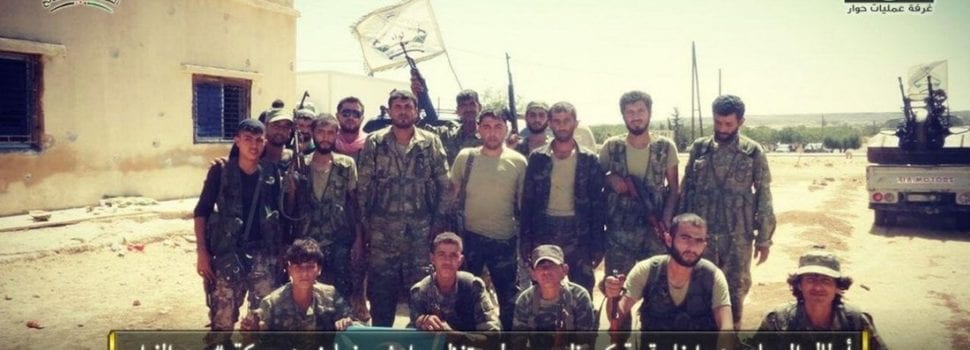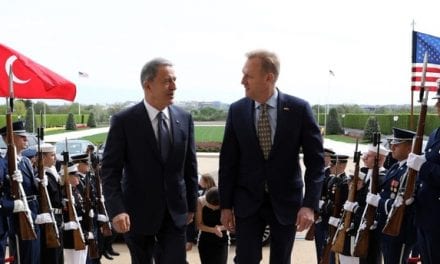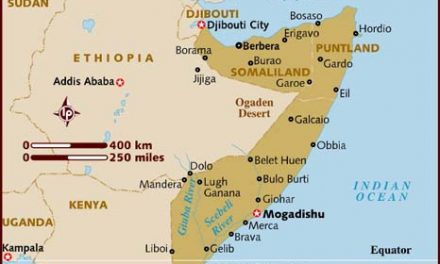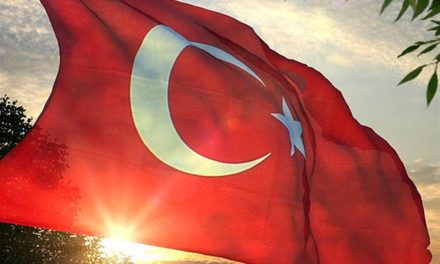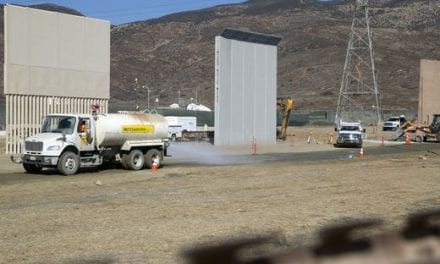The small area between the Kurdish cantons is home to a multi-ethnic group of Arabs, Kurds and Turkmen and is, in a sense, a microcosm of the Syrian war. There U.S., Russian, jihadi, Kurdish and Turkish forces all vie for power and influence.
In early July 2017, a wave of clashes displaced Syrians in both rebel- and Kurdish-controlled areas. The Kurds described strikes by Turkish-backed rebels as an occupation. Turkish officials claimed the attacks were legitimate security operations.
“Every step Turkish forces make is an occupation,” Sipan Hemo, a commander from the Kurdish People’s Protection Units — the YPG — told War Is Boring. “The fact that their goal is to defeat the Rojava revolution doesn’t change that.”
The YPG called the pro-Turkish rebels’ actions in the city of Afrin and surrounding villages a declaration of war, but Turkish deputy prime minister Numan Kurtulmus said the attacks were a “legitimate measure” and that Turkey “cannot remain silent against those sending missiles from Afrin.”
Turkey has made no secret of its territorial plans for Afrin. In early July 2017, Turkish soldiers hoisted the Turkish flag near the Afrin border — a direct act of provocation targeting the YPG barely a kilometer away.
The clashes were the object of social-media furry. Pro-Kurdish accounts blasted the attacks under the hashtag #handsoffafrin. Footage of wounded civilians and YPG soldiers circulated on both Turkish and Kurdish accounts.
Turkish forces entered northern Syria as part of Operation Euphrates Shield in August 2016 and, despite officially winding down the campaign in March 2017, Turkish troops have remained in the region.
YPG fighters in Afrin
During the launch of Euphrates Shield, Turkey said it would take both Manbij and Raqqa, thus blocking Kurdish territorial ambitions. Turkey feared YPG involvement in Raqqa would elevate the militia’s status and hand the group a powerful bargaining chip.
Turkey’s plans for Manbij and Raqqa never materialized. To add to the insult, coalition forces threw support behind the Kurds, who are now fighting on the ground in Raqqa under U.S. air cover.
The explosive situation has become a headache for the United States, which has been keen to placate the YPG while also de-escalating the conflict with its NATO ally Turkey. Add to this the proximity of Russian troops — also supporters of the YPG — and it’s a veritable strategic chessboard.
U.S. Army lieutenant general Steven Townsend acknowledged in 2016 that Russia and the United States “have converged literally within hand-grenade range of one another” in a small enclave near Al Bab.
This isn’t the first time the United States has been caught between Turkey and the YPG. In early 2016, the Kurds — who share an 800-kilometer border with Turkey — clashed with Turkish forces after what Turkey alleged was an attack by regime and Kurdish forces on a Turkish military outpost on the border.
It’s becoming increasingly difficult for the United States to appease Turkey. Especially as Washington continues to arm and train the Syrian Democratic Forces, an umbrella anti-Islamic State organization that includes the YPG.
The SDF mainly consists of YPG fighters and local Arab tribal fighters. The rebels Turkey backs are more difficult to pin down. They include:
- The Sham Legion, a group with roots in the Muslim Brotherhood. It includes a branch of the Nour Al Din Al Zenki Movement, a group that’s notorious for beheading people and throwing them off of buildings as well as torturing and executing journalists. The Sham Legion received TOW anti-tank missiles from the United States.
- The Sultan Murad Division. Named after an Ottoman Sultan who fought against the Christians in the Balkans, this hardline Turkish nationalist group also received TOW missiles from Washington.
- Ahrar Al Sham, a group that seeks to impose sharia law and once fought alongside Islamic State. Assyrian sources accused the group of executing Christians in 2015.
- Sultan Mehmed the Conqueror Brigade, pictured at top. This Turkmen brigade is named for the Ottoman sultan who conquered Constantinople.
- The Samarkand Brigade, part of the U.S.-backed Hamza Division.
- The Descendants of Saladin Brigade, a Kurdish Islamic group named after Saladin, a Kurd who founded the Ayyubid Dynasty in the 12th century.
Mahmud Khallo, the chief commander of the Descendants of Saladin Brigade — the only Kurdish anti-YPG group fighting near Afrin, recently complained that Turkish forces mistreated and disarmed his fighters, potentially highlighting cracks in Turkey’s fragile rebel alliance. Pro-Turkish Arab fighters have also griped about the Turks’ preferential treatment of Turkmen fighters.
What effect this might have on Turkey’s anti-Kurdish strategy is unclear. In any event, it remains to be seen whether the world will once again act to limit Turkey in its own attempts to thwart the Kurds’ territorial ambitions.

